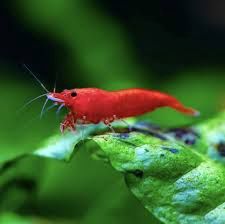Sakura red Shrimp (Neocaridina davidi var.)
Care Guide ❤️
The Sakura Red Shrimp (Neocaridina davidi variant) is one of the most popular and vibrant freshwater shrimp varieties, loved for its deep red coloration and easy care. These active, hardy shrimp are perfect for both beginners and experienced aquarists, adding color, movement, and natural cleaning power to planted aquariums.
Tank Requirements
-
Tank Size: Minimum 20 L (larger tanks help maintain stable parameters)
-
Temperature: 20 – 28 °C
-
pH: 6.5 – 7.8
-
Water Hardness: 4 – 12 dGH
-
Filtration: Gentle sponge or nano filter to protect small shrimp and fry
-
Substrate: Fine gravel or shrimp-specific substrate (dark substrate enhances color)
-
Décor: Live plants, moss, driftwood, and hiding spots to mimic their natural habitat and promote biofilm growth
️ Diet
Red Sakura Shrimp are omnivores and scavengers, thriving on a mixed diet:
-
Natural algae and biofilm
-
Shrimp pellets or specialized shrimp foods
-
Blanched vegetables (zucchini, spinach, cucumber)
-
Occasional protein foods like crushed flakes or bloodworms
Feed small portions once per day — they’ll graze continuously between meals.
Social Behavior
-
Peaceful and best kept in groups of 10 or more for confidence and natural behavior.
-
Suitable tank mates include small, calm fish like rasboras, tetras, and corydoras.
-
Avoid aggressive or predatory species such as bettas or large cichlids.
Breeding
Breeding is straightforward in stable conditions. Females carry eggs beneath their tails for 3–4 weeks, hatching into fully formed miniature shrimp. Provide moss or fine plants for fry to hide and feed safely.
Interesting Fact
The Red Sakura Shrimp is a selectively bred line of the wild Neocaridina davidi, developed to achieve its intense red color. Interestingly, the richness of their red pigment can deepen with diet, lighting, and a dark substrate — meaning your care directly affects how brilliantly they shine! ❤️✨
Reference: Bubbly Fish – creating underwater wonders.

